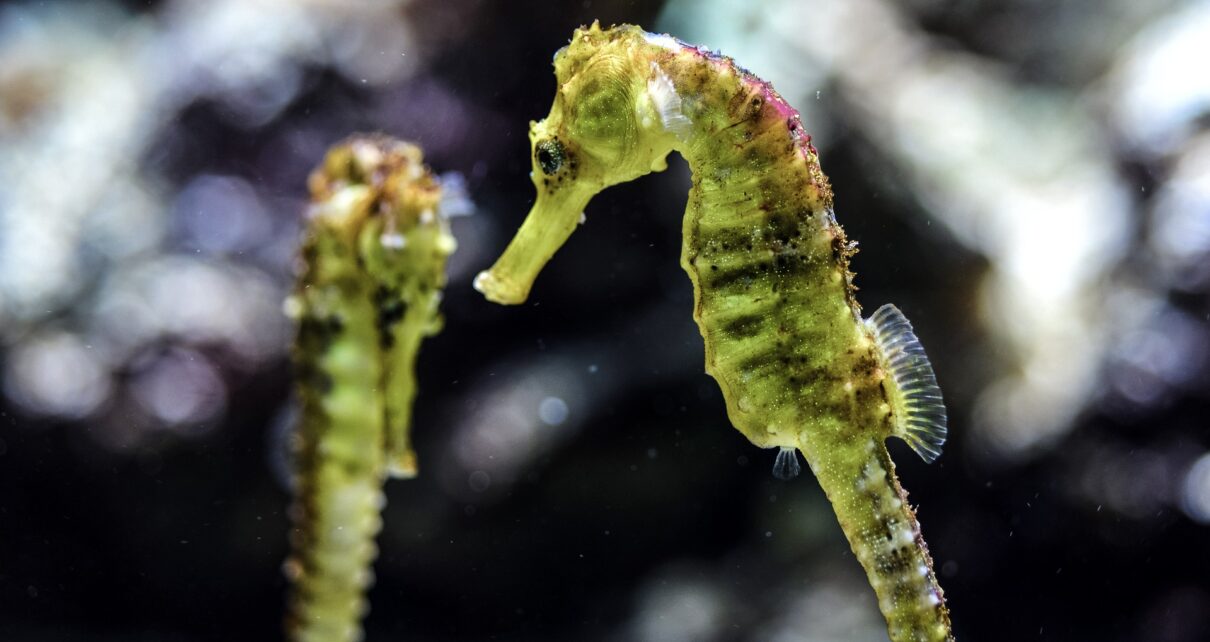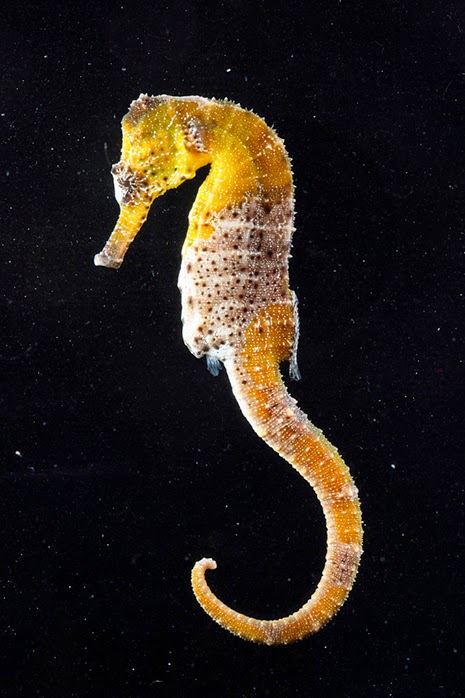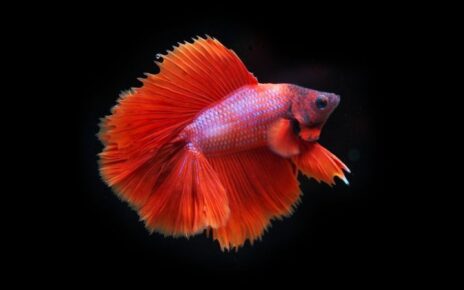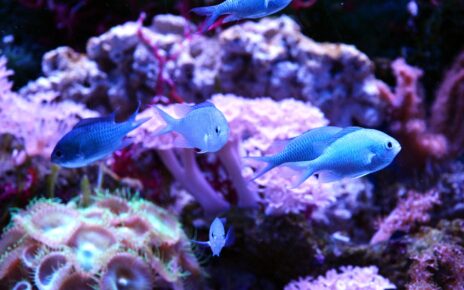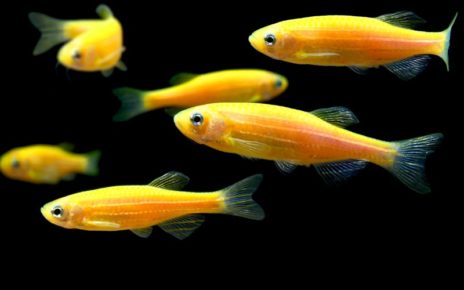Seahorses are one of the most interesting animals you can keep in a home aquarium.
The way they look and swim is fascinating and, whether you have an appreciation for aquatic animals or not, most people will agree they are just plain mysterious and unearthly creatures.
Before you even consider keeping Seahorses in an aquarium, you need to educate yourself on the needs of these animals.
Wild Seahorses are highly a threatened species. In the aquarium trade, it is quite unfortunate because 99% of the attempts at keeping these animals end up in failure. Seahorses are delicate, fragile animals that require specific care in order to survive in captivity.
This article will give you a complete rundown on how to create a suitable environment for these mystical aquarium animals and should help increase your odds of success.
Buying Seahorses
Wild Seahorses
First and foremost, where are you going to buy a Seahorse? I would regard many of the Seahorse specimens available at local fish stores as irresponsible purchases for most of us. Many are not bred in captivity and may carry dangerous pathogens into your aquarium, which will eventually kill your new pet.
Wild Seahorses might also reject frozen/prepared foods. Wild caught or ocean-pen raised horses are difficult to rear in captivity. These animals are best left to the experts considering their threatened status in the wild and high demand for care.
Captive Bred Seahorses
 |
| Photo Credit: Darren Foreman |
It is difficult to find a trusted source of truly captive-bred Seahorses (those born and raised in a clean, sterile environment with synthetic or properly sterilized seawater). It is therefore important to do some research and speak with others in the aquarium community.
Joining a forum is a great way to get in touch with experienced horse tamers and find a suitable source. There are a few reputable websites here in the U.S. that sell Seahorses direct to the public. A quick Google search will point you in the right direction.
Types of Seahorses
Your next step is to decide which species you plan to keep and educate yourself about that particular type of Seahorse.
While the actual tank set up and care for Seahorses is pretty much identical, the specific dietary needs and ideal temperature range can vary. Seahorses are naturally found in tropical, sub-tropical and temperate environments.
More often than not, it is easier to keep tropical species since it is easier to maintain proper temperatures. Seahorses kept in aquariums with improper temperatures are almost guaranteed to perish within a short time of being in captivity—I will touch more on this below.
Seahorse Husbandry
Seahorses belong to the family Syngnathidae and Genus Hippocampus with 54 known species. They live in shallow marine environments in a variety of different locations throughout our oceans.
Seahorses are typically found in or around coral reefs, sea grass beds, mangroves and estuaries where water currents are mild and plenty of natural structure/cover is available to avoid predators. They are closely related to Pipefish and are a “Bony Fish,” but have skin (instead of scales) which makes them highly susceptible to infections.
Seahorses are gentle creatures with sensitive immune systems and have minimal natural defenses. Most successful Seahorse aquariums are species-specific because very few animals can be kept in combination with Seahorses. A species-specific tank provides a safe environment that allows Seahorses to get plenty of food and live a stress-free life.
Here is a list* of what I consider safe companions for Seahorse aquariums. As you can see, the list is neither long nor particularly exciting:
- Snails (Nerite, Nassarius, Turbo, Astrea, Cerith and Trochus)
- Small Hermit Crabs (Scarlet and Blue Leg)
- Peppermint Shrimp
- Feather Dusters
- Gorgonians
*Keep in mind this is merely a guide. You may experience success keeping Seahorses with a variety of other marine animals. I just prefer to be safe than sorry!
Seahorse Care Level
Seahorses are not strong swimmers and will need a low flow environment in order to move about the aquarium and feed at will. Fun fact: the slowest moving fish in the ocean are Pygmy Seahorses! Try to provide mild to moderate water flow and keep a few areas of very low flow in the aquarium where the Seahorses can settle down to rest.
Seahorses prefer a low light environment with a regular 12 on/12 off schedule. Most standard aquarium lights are acceptable. You want to avoid high output reef aquarium lighting as it can stress out your horses. Just another reason not to place a Seahorse in your reef tank!
Seahorses are highly susceptible to pathogens and disease. You should always quarantine new horses for 6-12 weeks before introducing them into an existing aquarium that contains seahorses. Medication and treatment techniques are available and well-documented online. Do a little research before administering any treatment to ensure you have properly identified the ailment.
Seahorse Aquarium Setup
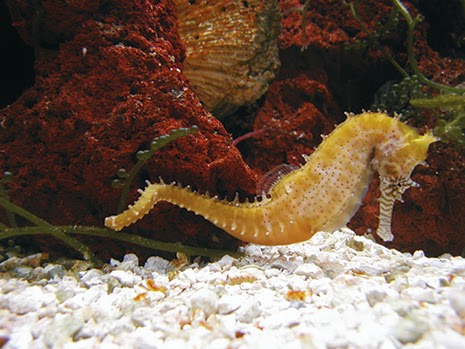 |
| Photo Credit: Holden Gehrung |
A Seahorse aquarium should be adorned with plenty of hitching posts or slender decorations for your horses to wrap their prehensile tails around so they can rest in between feedings. Fake plants, kelp, dead coral, live macro-algae and mangroves are all excellent hitching posts.
The coolest Seahorse tanks I have seen are stocked with a variety of macro-algae that act as natural hitching posts for Seahorses. Macro-algae can thrive in an aquarium with minimal care.
Seahorse Aquarium Size
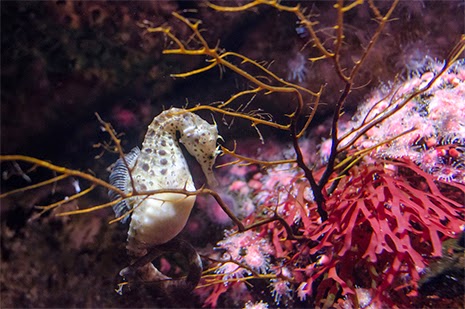 |
| Photo Credit: Neil H |
Seahorses prefer tall aquariums with a minimum height of about 18”. The general rule for tank size is 20-30 gallons per adult pair of horses. The height of the aquarium should be at least 3-4 times the height of the Seahorse’s adult size. Seahorses range in size from ½” all the way up to about 12” depending on the species, which is another reason why pre-purchase research is so important!
Seahorse Aquarium Filtration
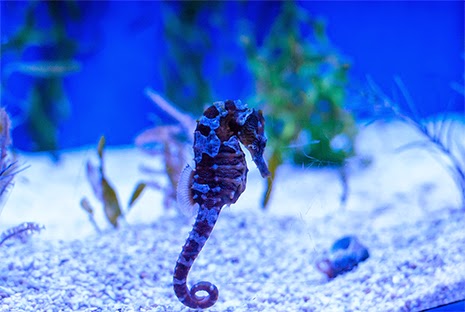 |
| Photo Credit: Matt Chan |
Keeping the water clean in a Seahorse tank is critical. Sumps, canister filters, hang-on power filters and even all-in-one aquariums with built-in filtration are suitable for Seahorses.
You will need an effective filter, but keep in mind the flow rate in your tank must be kept to a minimum. Spray bars or flow diffusers can help. Multiple return nozzles can be used to spread flow around without creating areas of high turbulence so that detritus is kept suspended for removal by your filter.
With frequent feedings and waste, Seahorse tanks must have effective mechanical filtration—such as filter socks, sponges or filter floss—to remove particulates from your aquarium water. These mechanical filters need to be cleaned or replaced often to avoid a build-up of nitrates.
A protein skimmer is highly recommended to remove dissolved waste and keep nitrates at low levels. Micro-bubbles can lead to health problems in Seahorses, so be sure your skimmer is running efficiently and effectively to avoid any issues.
Remember, clean water helps keep Seahorses stress-free and will promote healthy, strong immune systems.
Seahorse Aquarium Water Temperature
The water temperature in a Seahorse tank needs to be set according to the particular species in your care in order to recreate their natural environment. I have outlined the temperature ranges of Seahorses’ native environments below.
- Tropical: 71-74° F
- Sub-tropical: 67-70° F
- Temperate: 64-66° F
You probably noticed these ranges are cooler than most tropical aquariums. When kept at higher temperatures, Seahorses can become stressed and fall victim to pathogens or disease they might otherwise be able to fend off.
In warm captive environments, certain pathogens can reproduce faster and be found in higher concentrations, putting your Seahorse at greater risk of infection. It is therefore essential to keep Seahorse aquariums within the proper temperature range and always practice proper quarantine techniques.
A fan blowing across the surface of your aquarium water can help keep the water temperature within ideal ranges for a tropical species. Be sure to monitor the aquarium’s water temperature prior to introducing Seahorses to the tank. A chiller may be required to keep temperatures stable depending on the tank’s location in your home and your local climate.
Seahorse Aquarium Water Parameters
Typical marine aquarium water chemistry is suitable for Seahorses. I have outlined each of the major water parameters below. Be sure not to let your pH level swing too dramatically and keep the salinity level in check.
- pH: 8.0 to 8.3
- Specific gravity: 1.020 to 1.024
- Ammonia: 0
- Nitrite: 0
- Nitrate: <20 ppm
- Phosphates: 0
- Ca: 420ppm
- Alk: 8-9ppm
- Mg: 120
Feeding Seahorses
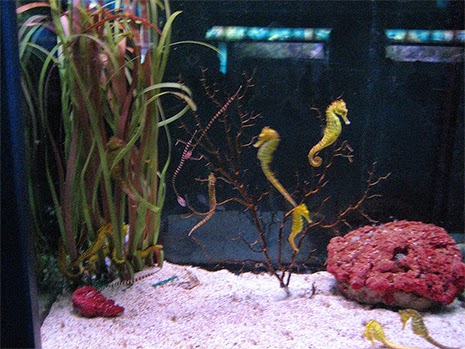 |
| Photo Credit: icelight |
Seahorses are naturally ambush predators and feed on a variety of small crustaceans in the wild. In captivity, Seahorses should be fed at least twice a day. Be sure to offer food slowly to give the animals time to consume what you put in the aquarium before it gets lost in the filter.
Turning off your pumps and protein skimmer during feeding time is helpful; a device like the CPR Smart Feeder that helps distribute food to less aggressive eaters, like bottom-dwellers and seahorses, can also be beneficial.
Most captive-bred Seahorses readily accept frozen foods but will require a varied diet. Below is a list of frozen prepared foods suitable for your Seahorse. It is a good idea to fortify these foods with vitamins and/or HUFAs to ensure complete nutrition. American Marine Selcon is a great product to use for this purpose.
- Mysis shrimp
- Brine Shrimp
- Plankton
- Krill
- Ghost Shrimp
- Cyclops
It is safe to feed a variety of live foods as well. Here is a list of live foods that will help you raise strong, healthy little horses. They also help satisfy natural predation behavior—which is quite entertaining to watch.
- Brine Shrimp
- Ghost Shrimp
- Copepods
- Amphipods
- Rotifers

